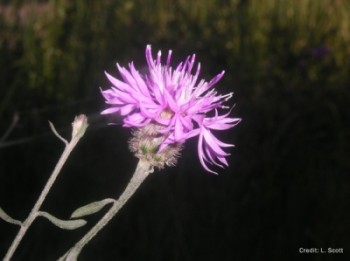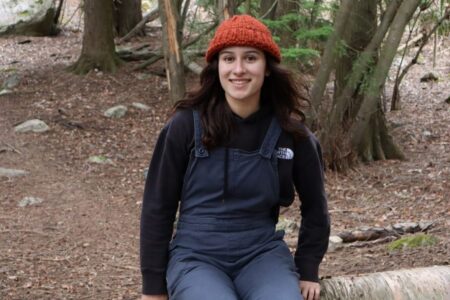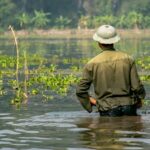INVASIVE SPECIES DAMAGE ECONOMY, BIODIVERSITY; JUNE IS INVASIVE SPECIES ACTION MONTH.
Rossland: June 6 is our 11th annual Trails Day. The Rossland hiking and biking trails network has 30 trails stretching for over 170 kilometres, and both hiking and biking can and do spread invasive weeds. You may have noticed that many trails now sport fringes of spotted knapweed, orange hawkweed, burdock (full of highly adhesive burrs later in the season), common tansy, hoary alyssum and other invasive species. These, and many other introduced, non-native invasive species, flourish and spread successfully due to a lack of natural predators and controls. They are highly competitive and can outcompete native plant and animal species, displacing native species and damaging fragile ecosystems.
To counteract the weed-spreading effects of our fun out there, volunteers who come out for Trails Day will gather at the Centennial Trailhead parking lot and go off to help remove teasel from the Warfield Reptile Management Area, on property owned by Teck Metals Ltd. Teck has allowed the Kootenay Columbia Trails Society (KCTS) to keep and maintain the Green Door trail running through this property for public enjoyment, even though it has high conservation value. Removing teasel will help maintain habitat for some native creatures, including the rubber boa, the North American racer, and the blue-tailed skink.
We’re assured that volunteers will be provided with a pot-luck and beverages (unspecified), and that there will be SCHWAG (also unspecified). But we’ll do it just for the joy of vanquishing evil, won’t we? In the process, we’ll learn how to avoid spreading weeds — the catch-phrase is PLAY, CLEAN, GO — emphasizing the importance of removing weed seeds and fragments from our gear and clothing before heading off on a new trail.
To register for the fun-filled action day of trail volunteering and evil-invasive vanquishing, potluck and beverages, please email Patrick Kinghorn at: pkinghorn@sd20.bc.ca. If you don’t register, there may not be enough potluck or beverages. Or SCHWAG.
June is Invasive Species Action Month — to inform people of the damage done by invasive species, and how to discourage their spread. Invasive species have been identified as the second gravest threat to biodiversity — right after deforestation. That’s the evil, or part of it. Another part is economic; invasive species invade agricultural land, and (for example) if a hay crop is contaminated by hoary alyssum, which can make horses ill, the market value of the hay crop is destroyed.
Each week of Invasive Species Action Month, the Invasive Species Council of BC (ISCBC) will highlight specific areas where British Columbians can take action. The first week launches a new campaign, Don’t Let It Loose!, will educate about the harm of releasing unwanted pets and aquarium plants into the wild. The second week will focus on PlantWise, educating gardeners and those in agriculture, ranching and horticulture about preventing and stopping the spread of invasive plants in BC. The third week is focused on aquatic invasive species, with special campaigns around Clean Drain Dry to encourage boaters to take responsible actions to prevent the spread of invasive mussels and aquatic plants. The fourth week will focus on outdoor recreation, reaching out to campers and outdoor sports enthusiasts to remind them to Burn it Where you Buy it for firewood and Play Clean Go to remove debris from outdoor equipment to prevent spreading invasives.

























